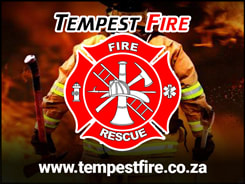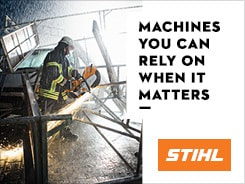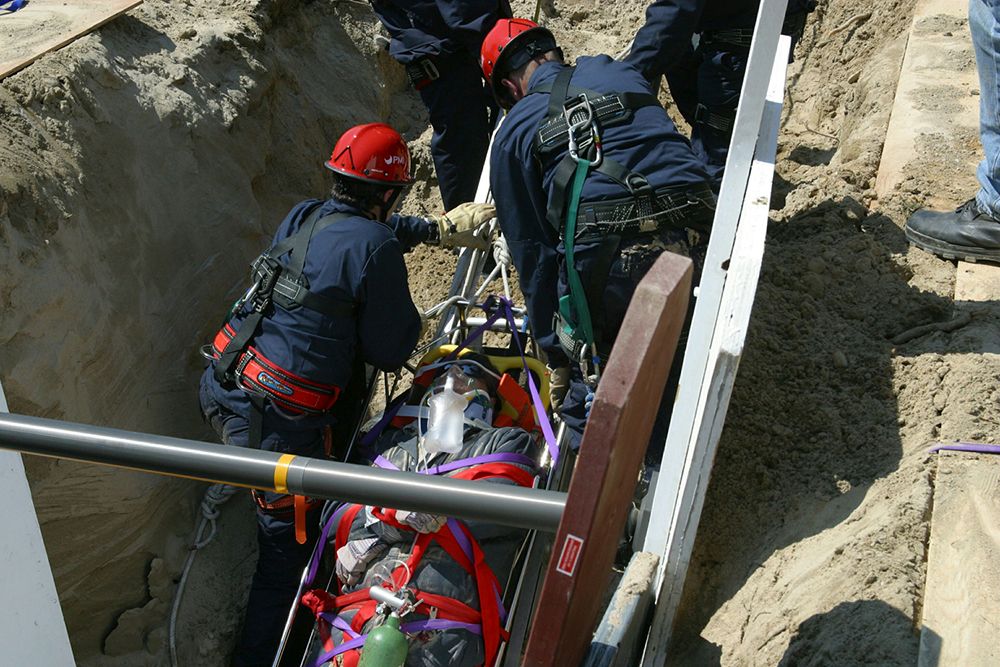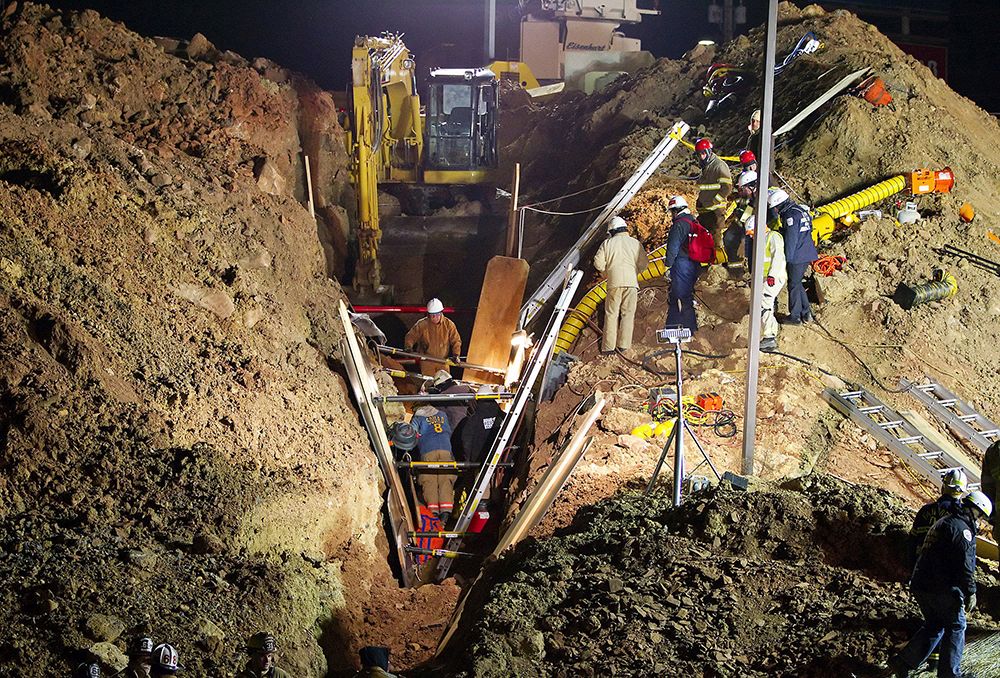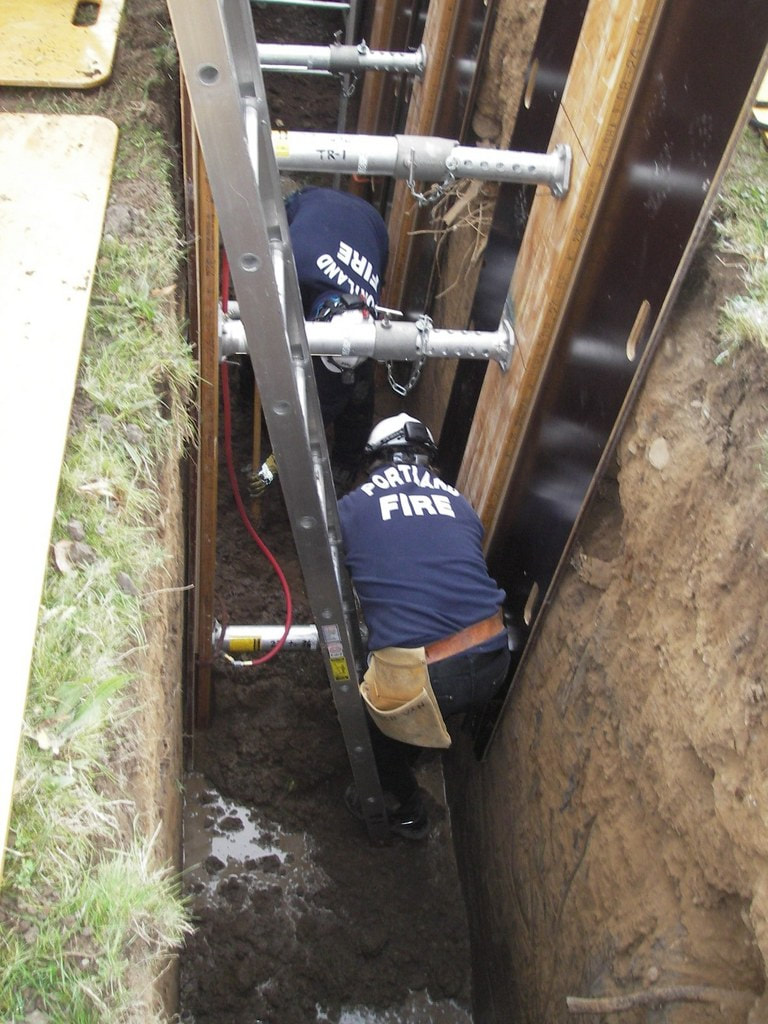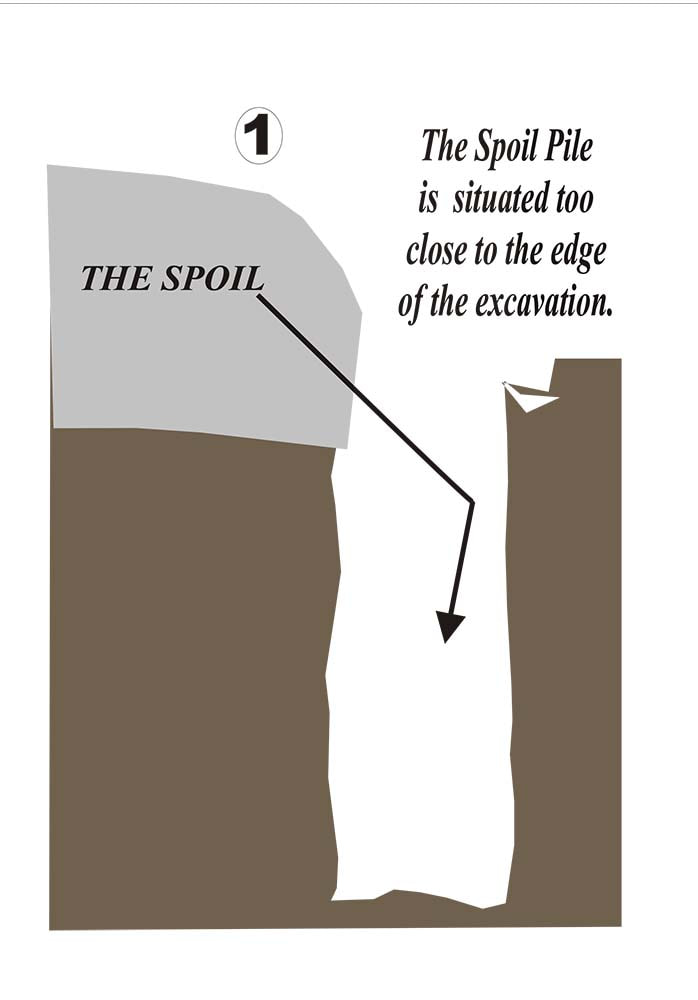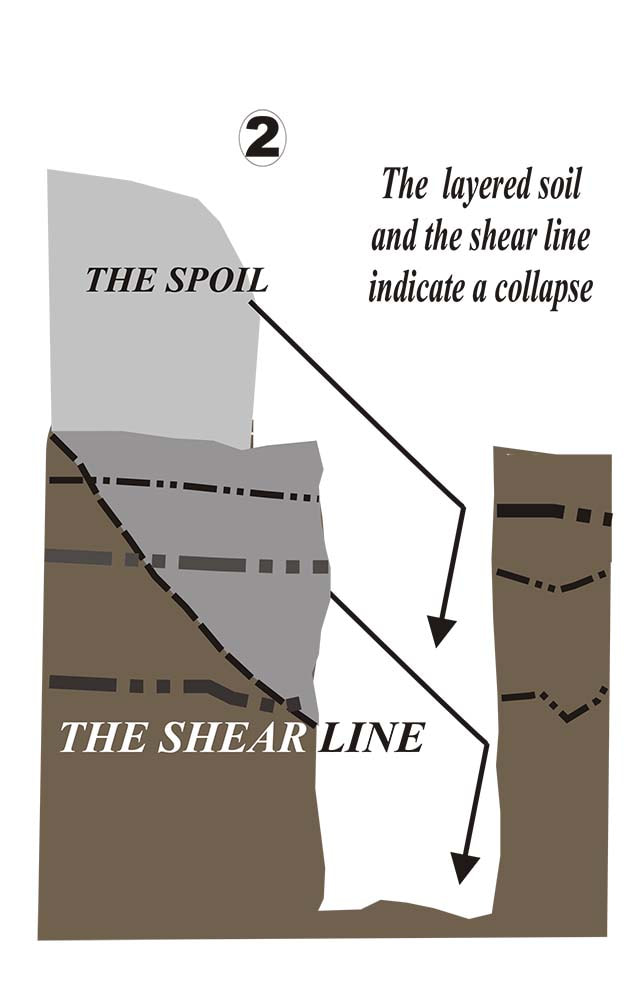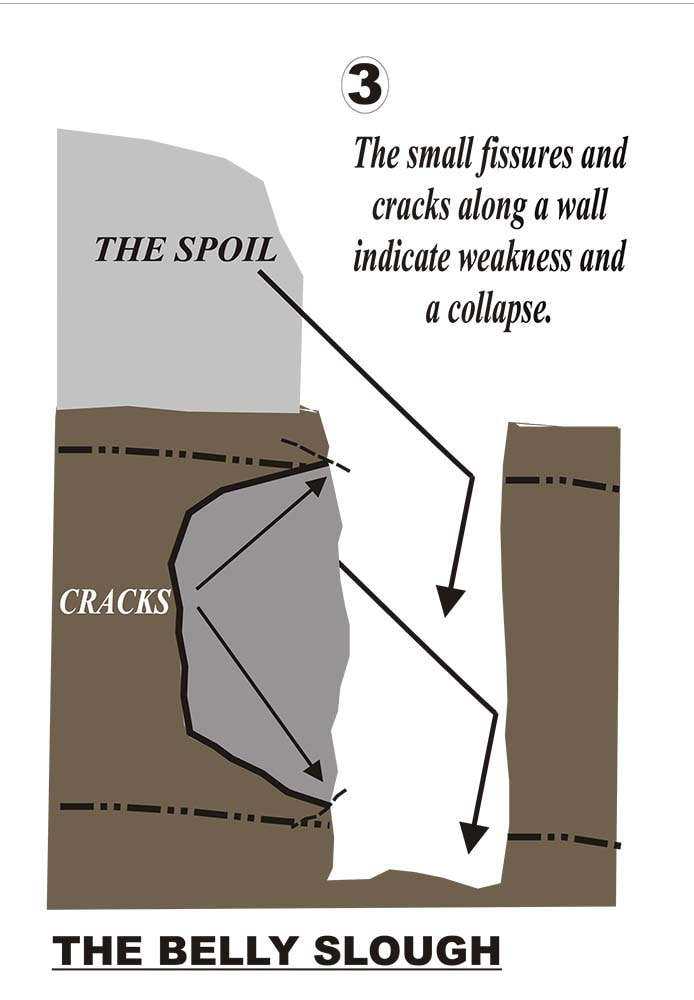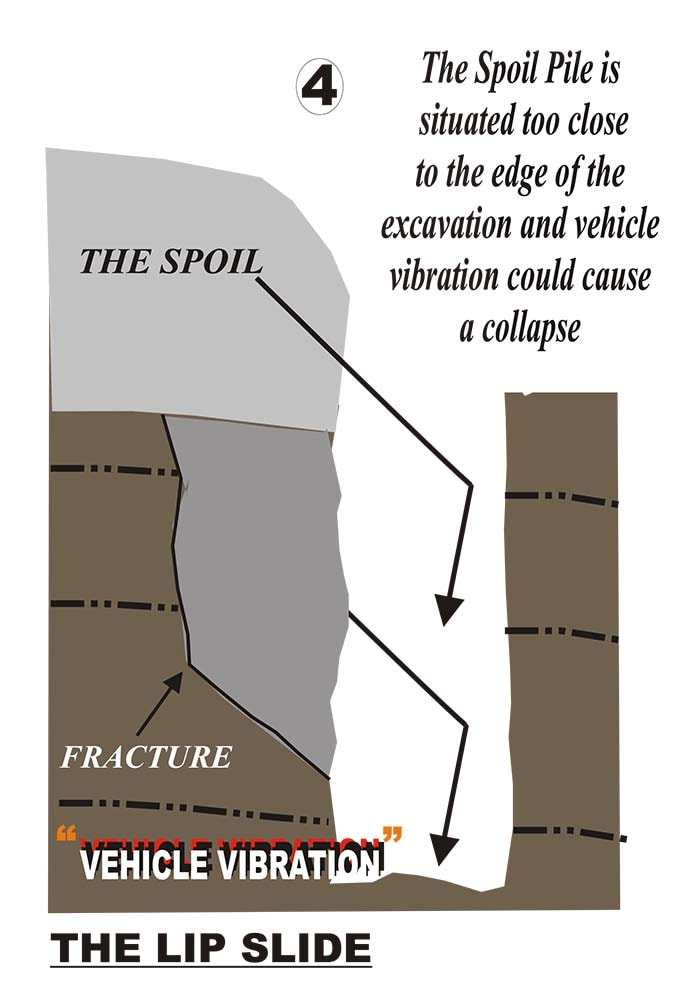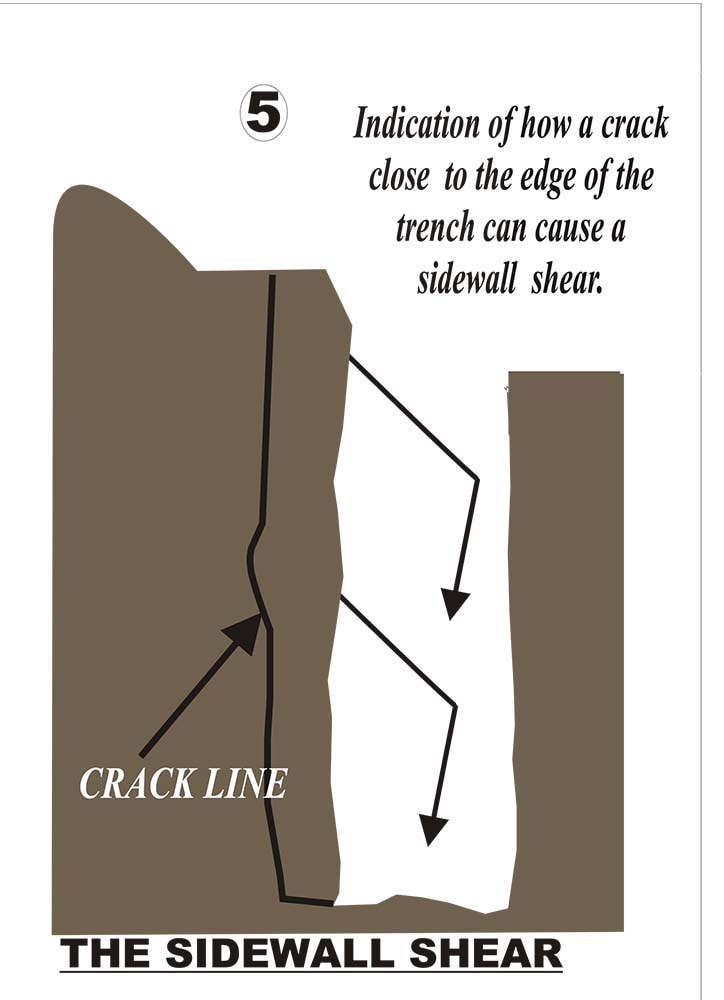- Home
- Magazines
-
Newsletters
- 19 July 2024
- 12 July 2024
- 5 July 2024
- 28 June 2024
- 14 June 2024
- 7 June 2024
- 31 May 2024
- 24 May 2024
- 17 May 2024
- 10 May 2024
- 3 May 2024
- 26 April 2024
- 19 April 2024
- 12 April 2024
- 22 March 2024
- 15 March 2024
- 8 March 2024
- 1 March 2024
- 23 February 2024
- 16 February 2024
- 9 February 2024
- 26 January 2024
- 19 January 2024
- 12 January 2024
- 22 December 2023
- 1 December 2023
- 24 November 2023
- 10 November 2023
- 3 November 2023
- 27 October 2023
- 20 October 2023
- 13 October 2023
- 6 October 2023
- 29 September 2023
- 22 September 2023
- 15 September 2023
- 8 September 2023
- 25 August 2023
- 18 August 2023
- 11 August 2023
- 4 August 2023
- 28 July 2023
- 21 July 2023
- 14 July 2023
- 7 July 2023
- 30 June 2023
- 23 June 2023
- 15 June 2023
- 2 June 2023
- 26 May 2023
- 19 May 2023
- 12 May 2023
- 5 May 2023
- 28 April 2023
- 21 April 2023
- 14 April 2023
- 6 April 2023
- 31 March 2023
- 24 March 2023
- 17 March 2023
- 10 March 2023
- 3 March 2023
- 24 February 2023
- 17 February 2023
- 10 February 2023
- 3 February 2023
- 27 January 2023
- 13 January 2023
- 22 December 2022
- 15 December 2022
- 9 December 2022
- 2 December 2022
- 25 November 2022
- 18 November 2022
- 11 November 2022
- 4 November 2022
- Advertising
- Subscribe
- Articles
-
Galleries
- AOSH Firexpo 2024
- Midvaal Fit to Fight Fire 2024
- WoF KNP 2023 Gallery
- TFA 2023 Gallery
- DMISA Conference 2023
- ETS 2023 Gallery
- Drager Fire Combat and Rescue Challenge 2023
- AOSH Firexpo 2023
- Midvaal Fit to Fight Fire
- WC IFFD 2023
- NMU 13th Fire Management Symposium 2022
- JOIFF Africa Conference 2022
- ETS 2022 Gallery
- TFA 2022 Gallery
- IFFD 2018
- SAESI
- TFA
- WRC 2018
- WRC 2019
- A-OSH/Securex
- IFE AGM 2019
- ETS Ind Fire Comp Nov 2019
- ETS Challenge 2021
- Drager launch
- Drager Fire Combat and Rescue Challenge 2022
- TFA
- Contact
- Home
- Magazines
-
Newsletters
- 19 July 2024
- 12 July 2024
- 5 July 2024
- 28 June 2024
- 14 June 2024
- 7 June 2024
- 31 May 2024
- 24 May 2024
- 17 May 2024
- 10 May 2024
- 3 May 2024
- 26 April 2024
- 19 April 2024
- 12 April 2024
- 22 March 2024
- 15 March 2024
- 8 March 2024
- 1 March 2024
- 23 February 2024
- 16 February 2024
- 9 February 2024
- 26 January 2024
- 19 January 2024
- 12 January 2024
- 22 December 2023
- 1 December 2023
- 24 November 2023
- 10 November 2023
- 3 November 2023
- 27 October 2023
- 20 October 2023
- 13 October 2023
- 6 October 2023
- 29 September 2023
- 22 September 2023
- 15 September 2023
- 8 September 2023
- 25 August 2023
- 18 August 2023
- 11 August 2023
- 4 August 2023
- 28 July 2023
- 21 July 2023
- 14 July 2023
- 7 July 2023
- 30 June 2023
- 23 June 2023
- 15 June 2023
- 2 June 2023
- 26 May 2023
- 19 May 2023
- 12 May 2023
- 5 May 2023
- 28 April 2023
- 21 April 2023
- 14 April 2023
- 6 April 2023
- 31 March 2023
- 24 March 2023
- 17 March 2023
- 10 March 2023
- 3 March 2023
- 24 February 2023
- 17 February 2023
- 10 February 2023
- 3 February 2023
- 27 January 2023
- 13 January 2023
- 22 December 2022
- 15 December 2022
- 9 December 2022
- 2 December 2022
- 25 November 2022
- 18 November 2022
- 11 November 2022
- 4 November 2022
- Advertising
- Subscribe
- Articles
-
Galleries
- AOSH Firexpo 2024
- Midvaal Fit to Fight Fire 2024
- WoF KNP 2023 Gallery
- TFA 2023 Gallery
- DMISA Conference 2023
- ETS 2023 Gallery
- Drager Fire Combat and Rescue Challenge 2023
- AOSH Firexpo 2023
- Midvaal Fit to Fight Fire
- WC IFFD 2023
- NMU 13th Fire Management Symposium 2022
- JOIFF Africa Conference 2022
- ETS 2022 Gallery
- TFA 2022 Gallery
- IFFD 2018
- SAESI
- TFA
- WRC 2018
- WRC 2019
- A-OSH/Securex
- IFE AGM 2019
- ETS Ind Fire Comp Nov 2019
- ETS Challenge 2021
- Drager launch
- Drager Fire Combat and Rescue Challenge 2022
- TFA
- Contact
|
3 November 2023
|
Featured FRI Magazine article: Trench collapse rescue – no place for short cuts by Colin Deiner (FRI Vol 1 no 8)
https://www.frimedia.org/uploads/1/2/2/7/122743954/vol1no8_final_doc.pdf
This week’s featured Fire and Rescue International magazine article is: Trench collapse rescue – no place for short cuts, written by Colin Deiner (FRI Vol 1 no 8). We will be sharing more technical/research/tactical articles from Fire and Rescue International magazine on a weekly basis with our readers to assist in technology transfer. This will hopefully create an increased awareness, providing you with hands-on advice and guidance. All our magazines are available free of charge in PDF format on our website and online at ISSUU. We also provide all technical articles as a free download in our article archive on our website.
Trench collapse rescue – no place for short cuts
By Colin Deiner, Chief Director, Disaster management and Fire Brigade Services, Western Cape Provincial Government
If you take a drive through your city, you are likely to come across a number of construction sites which will have various levels of excavating operations taking place. In these excavations you will most likely find a fair number of workers going about their specific tasks oblivious to the fact that the trench they are in could collapse at any second, without warning, and kill them instantly or place their lives at great peril. As emergency services, we are expected to respond to these incidents, in most cases as a first response capability. Although most first-response organisations may not be trained in this area, they can take specific actions to help ensure a successful rescue.
In the course of this article, I will attempt to provide some useful tips on how to go about doing just that.
What is a trench?
There are a few definitions for a trench. The construction industry and occupational health and safety types will generally have their own definitions for the various types of trenches they work in. The most important thing for them is to adhere to the OHS Act regulations which do not allow any employer to require or permit any person to work in an excavation which has not been adequately shored or braced.
For emergency responders the simple definition of a trench is “an excavation that is deeper than it is wide”.
Trench collapse – the truth
As in many rescue disciplines, a number of misconceptions and fallacies related to trench collapse are out there. Many of them have been sprouted by contractors or rescuers choosing to take a short-cut when working in a trench or conducting rescue operations. Some of the more common fallacies you are likely to encounter are:
The truth of the matter is unfortunately mostly the opposite:
The main thing to understand here is that a trench collapse happens at a great speed (around one-tenth of a second). You can’t outrun it. The weight of a collapse must also not be underestimated. A simple lip slide could drop up to a half ton of soil on your chest. More people die from the force of the collapse than from suffocation.
Why do trenches collapse?
People enter and work in trenches for a variety of reasons. There are therefore a number of reasons that trenches may collapse, the most common being due to soil disturbed by earth moving equipment or hand tools. In a trench network configuration you will also find weaknesses of the system at areas where trenches intersect. The vibration of nearby heavy plant and machinery has been another reason for trench collapse. There are also recorded cases of trench walls drying out and collapsing after being left open overnight or for an extended period of time. Seepage of subsurface water and inclined layers of soil too close to the lip of the trench are other factors that could have an influence on trench stability and need to be managed carefully.
In the main there are five ways in which a trench can collapse:
This week’s featured Fire and Rescue International magazine article is: Trench collapse rescue – no place for short cuts, written by Colin Deiner (FRI Vol 1 no 8). We will be sharing more technical/research/tactical articles from Fire and Rescue International magazine on a weekly basis with our readers to assist in technology transfer. This will hopefully create an increased awareness, providing you with hands-on advice and guidance. All our magazines are available free of charge in PDF format on our website and online at ISSUU. We also provide all technical articles as a free download in our article archive on our website.
Trench collapse rescue – no place for short cuts
By Colin Deiner, Chief Director, Disaster management and Fire Brigade Services, Western Cape Provincial Government
If you take a drive through your city, you are likely to come across a number of construction sites which will have various levels of excavating operations taking place. In these excavations you will most likely find a fair number of workers going about their specific tasks oblivious to the fact that the trench they are in could collapse at any second, without warning, and kill them instantly or place their lives at great peril. As emergency services, we are expected to respond to these incidents, in most cases as a first response capability. Although most first-response organisations may not be trained in this area, they can take specific actions to help ensure a successful rescue.
In the course of this article, I will attempt to provide some useful tips on how to go about doing just that.
What is a trench?
There are a few definitions for a trench. The construction industry and occupational health and safety types will generally have their own definitions for the various types of trenches they work in. The most important thing for them is to adhere to the OHS Act regulations which do not allow any employer to require or permit any person to work in an excavation which has not been adequately shored or braced.
For emergency responders the simple definition of a trench is “an excavation that is deeper than it is wide”.
Trench collapse – the truth
As in many rescue disciplines, a number of misconceptions and fallacies related to trench collapse are out there. Many of them have been sprouted by contractors or rescuers choosing to take a short-cut when working in a trench or conducting rescue operations. Some of the more common fallacies you are likely to encounter are:
- Accidents only occur in deep trenches
- Most incidents occur in bad weather
- Clay is the least dangerous soil type
- Once a collapse occurs, the trench is safe and
- “He’s just buried up to his legs, let’s just yank him out”.
The truth of the matter is unfortunately mostly the opposite:
- Most accidents occur in trenches of two metres and less
- Incidents generally happen in good weather
- Clay is deceptive
- A collapsed trench has a fifty percent chance of a secondary collapse and
- The forces of moving earth are huge. The patient must be totally uncovered before being removed.
The main thing to understand here is that a trench collapse happens at a great speed (around one-tenth of a second). You can’t outrun it. The weight of a collapse must also not be underestimated. A simple lip slide could drop up to a half ton of soil on your chest. More people die from the force of the collapse than from suffocation.
Why do trenches collapse?
People enter and work in trenches for a variety of reasons. There are therefore a number of reasons that trenches may collapse, the most common being due to soil disturbed by earth moving equipment or hand tools. In a trench network configuration you will also find weaknesses of the system at areas where trenches intersect. The vibration of nearby heavy plant and machinery has been another reason for trench collapse. There are also recorded cases of trench walls drying out and collapsing after being left open overnight or for an extended period of time. Seepage of subsurface water and inclined layers of soil too close to the lip of the trench are other factors that could have an influence on trench stability and need to be managed carefully.
In the main there are five ways in which a trench can collapse:
|
The spoil pile slide
These types of collapses are very common and occur when soil is piled too close to the edge of the trench. A number of factors can cause this type of collapse such as the pile reaching a critical height or slope, becoming saturated with water or being disturbed by heavy machinery vibrations. This type of collapse might not cause serious injuries initially but could cause further collapse of the trench wall through its weight. Rescue operations on this kind of trench are initially difficult since the remaining spoil pile will need to be cleared from the area and trench protection must be laid down before rescue efforts can commence. Conducting a rescue is relatively simple as you don’t have any collapsed walls that need to be stabilised before inserting trench sheeting around the victim. |
|
Shear wall collapse:
These occur mostly in clay or layered soil. They usually are catastrophic, happen very quickly and cause death or serious injury to the victim. Rescuing victims from this time of collapse can be extremely difficult and time consuming. This is due to the challenges encountered in shoring up the slope of a wall where the collapse has occurred. |
|
Slough-in:
This normally occurs in areas close to underground utilities or where moving water is present in the trench. This type of collapse is usually rapid and buries the victim, often suffocating the victim. Rescuing victims is very challenging and dangerous due to the shoring problems caused by the overhanging wall and indentation of the wall. |
|
Lip slide
This is similar to the shear wall collapse but smaller and less severe. The lip slide normally occurs when the spoil pile is placed too close to the trench and its weight causes the lip of the trench to fracture and allow the spoil pile to run into the trench. Rescues from this type of collapse are relatively simple but care must be taken to recognise signs of a secondary collapse. |
First-response units: actions
One thing any rescuer who has responded to a trench collapse will tell you is to be prepared to be there for a long time. Trench collapse rescue operations require a strong incident commander with a good understanding of the many dynamics of such an incident. He/she must understand the safety implications of the victim and rescuers, the degree of entrapment, when to rotate rescuers working in the trench and always be a step ahead of the activity in progress.
The first unit responding to a trench collapse must immediately establish an initial command post and position it no closer than fifteen metres from the collapsed trench (if possible). All working plant and heavy machinery in the immediate vicinity needs to be turned off and secured and an off-site staging area for later arriving units must be identified and clearly indicated.
They can now perform an inner and outer survey of the collapse area. This entails designating an imaginary “circle” around the collapse and moving around the circle, all the time collecting information while at the same time performing certain safety precautions.
The outer survey should initially be focused on eliminating all sources of vibration such as shutting down construction equipment and deviating traffic flow. Next on the list should be to identify witnesses and find the site supervisor. They can provide useful information such as the number of people that were in the trench at the time of the collapse, the location of the victim(s) and any other details that may be important to note. The site supervisor may also be able to supply sheeting which can be used to lay out around the top of the trench as a safety platform for rescuers.
It may also be worth it to consider using the site office as a command post. This would be especially helpful during bad weather.
Once the outer survey is completed, an incident perimeter should be established that should be kept clear of all non-essential personnel.
The inner circle survey should firstly focus on establishing approach lanes to the trench. This is done by laying down plywood boards, starting from a safe area and working towards the location of the victim(s). At this point the number and position of the victims should be ascertained. Rescuers can also try to establish the condition and level of entrapment of the victim but should take care not to lean into the trench due to the possibility of secondary collapse.
Trench collapse unit operations
The arrival of the trench collapse unit should escalate operations to a higher level and will commence with the clearing of excess ground around the trench and laying of plywood trench boards to create a safe working area. This is achieved by spreading the weight of the rescuers working around the trench over a larger area by means of the trench panels. This area will never be perfectly safe and rescuers must take care in not crowding onto a particular spot. They should also be vigilant and note any soil abnormalities (such as stress cracks), the composition and moisture content of the soil.
In certain cases the trench might be contaminated with methane gas or could present various levels of oxygen deficiency. The air in the trench should be monitored at least two levels and, if necessary, ventilation should be initiated.
Incident command is as important in trench rescue operations as anywhere else and your initial command staff should consist of an incident commander, a rescue sector officer (who should be responsible for the actual extrication), an EMS officer (who will be responsible for patient care), a shoring officer (who will oversee the measuring, cutting and placement of the shoring timbers) and a safety officer who will be an extra set of eyes and ears for everyone. The safety officer will monitor everyone in the hot zone’s actions, soil conditions and check for signs of secondary collapse. He/she is also responsible for on-going gas monitoring inside the trench.
The incident command staff should ensure clear command sectors and make sure that all people working on the site adhere to it. The command sectors should consist of the following:
Medical considerations
My very poor knowledge of all things medical will limit my input here to only a few thoughts. It will be extremely difficult to do a thorough medical report early on due to the fact that your medic might not be able to reach the victim and may have to do it from a short distance without actually making contact. The medic will have to make certain assumptions based on the type of collapse as well as the position of the victim.
Even in the most dire situation where a patient is in imminent danger of losing their lives, a medic should never enter an unshored trench to administer emergency care. Almost as many people die in secondary trench collapses than in the initial collapse. There is no place for short-cuts.
There are a number of conditions that can affect a victim of a trench collapse including hypothermia, respiratory distress, spinal injuries, crush syndrome, head injuries and suffocation. When dealing with a badly trapped, live victim, a strong possibility of crush syndrome will exist. A medical doctor or at least an advanced life support paramedic should be available in the trench with the patient for the entire duration of the extrication. The medic’s prime responsibly will be the administration of sufficient fluids to counteract the release of toxins during the release. You don’t want to spend hours extricating a patient only to find that they have died from crush syndrome a short while later.
Hypothermia can become a problem at night or in cold weather and will be exasperated by wet soil. Considering the fact that many trench collapse rescue continue for many hours, it will be necessary to keep the patient warm for this period.
As mentioned earlier, many people think that it is possible to yank a victim out of the trench if he/she is only trapped up to their knees or ankles. Never do this!! There could be a possibility that a rock could be causing a foot entrapment or the victim could have suffered a fracture or dislocation which will only worsen his/her current situation.
I have, on a few occasions, fallen victim to this temptation, only to meet with no success and ended up still digging the patient out two hours later.
Shoring the trench
Before anyone can enter a trench, it must be adequately stabilised and this is done by means of mechanical shoring or using timber. The concept of shoring is based on the “double-funnel” principle which entails the collection of the load (and force) and then redirecting that force against another load. This concept provides a system that is strong enough to prevent soil from starting to move, but not strong enough to stop moving the moving dirt.
Mechanical shoring has a number of advantages over timber shoring as it is lightweight, quick to deploy, versatile and very strong. The versatility is really important when adaptations have to be done in the length of the timbers (you can’t increase the length of a piece of wood). Unfortunately mechanical shores are expensive and have a limited working range.
Although timber shoring is heavy and can only be used once it has a relatively low cost and virtually limitless application. The ideal solution is to have a combination of the two which will allow you a rapid shoring ability to make the immediate area around the victim safe while also allowing you to prepare a more stable working station and address any difficult angles that may present themselves.
A trench rescue team must be used to working with each other and be able to communicate clearly. Especially when the person measuring the size of the trench is relaying the length requirements of the timber to the cutting station.
When planning the shoring operation a size-up must be done this must take the following into account:
Other possible impacts such as the water content in the trench, impact of nearby loads, location of victim(s) and the angle of the collapse must also be considered at this time.
The most important thing for any incident commander to understand is that the shoring operation is going to take a long time. Other than ensuring effective patient care for this time, you should also consider providing rehabilitation facilities for all involved and ensure sufficient water and food as well as cooling and heating (depending on the weather). Make a note of the time of day and try to benchmark the various objectives and the time it will take to achieve them. Order lighting early if the incident is going to run into the night and make arrangements for any changes in weather. Also plan for relief crews and arrange for cover companies to staff fire/rescue stations that might be depleted due to this lengthy operation.
During a lengthy trench collapse incident you might encounter large crowds, media and even family members in close attendance. Make sure that they are kept in an area a safe distance away from the collapse area and make sure someone in your command system is looking after them.
A serious mistake made by incident commanders is that they allow scene discipline to lapse after the victim has been removed. There are a fair number of accidents recorded where secondary collapse has occurred while rescue teams have been removing the shoring after removing a victim. All shoring must be removed in reverse order of the way they were placed in the trench. If the removal of certain shoring struts or panels could lead to a further collapse, it might be advisable to leave them in place and attempt removing them at a later date with the help of earth moving machinery. If timber shores were used you might not have to bother.
10 steps for successful operations
In closing, I include a quick checklist of 10 steps which need to be followed to ensure a successful operation.
One thing any rescuer who has responded to a trench collapse will tell you is to be prepared to be there for a long time. Trench collapse rescue operations require a strong incident commander with a good understanding of the many dynamics of such an incident. He/she must understand the safety implications of the victim and rescuers, the degree of entrapment, when to rotate rescuers working in the trench and always be a step ahead of the activity in progress.
The first unit responding to a trench collapse must immediately establish an initial command post and position it no closer than fifteen metres from the collapsed trench (if possible). All working plant and heavy machinery in the immediate vicinity needs to be turned off and secured and an off-site staging area for later arriving units must be identified and clearly indicated.
They can now perform an inner and outer survey of the collapse area. This entails designating an imaginary “circle” around the collapse and moving around the circle, all the time collecting information while at the same time performing certain safety precautions.
The outer survey should initially be focused on eliminating all sources of vibration such as shutting down construction equipment and deviating traffic flow. Next on the list should be to identify witnesses and find the site supervisor. They can provide useful information such as the number of people that were in the trench at the time of the collapse, the location of the victim(s) and any other details that may be important to note. The site supervisor may also be able to supply sheeting which can be used to lay out around the top of the trench as a safety platform for rescuers.
It may also be worth it to consider using the site office as a command post. This would be especially helpful during bad weather.
Once the outer survey is completed, an incident perimeter should be established that should be kept clear of all non-essential personnel.
The inner circle survey should firstly focus on establishing approach lanes to the trench. This is done by laying down plywood boards, starting from a safe area and working towards the location of the victim(s). At this point the number and position of the victims should be ascertained. Rescuers can also try to establish the condition and level of entrapment of the victim but should take care not to lean into the trench due to the possibility of secondary collapse.
Trench collapse unit operations
The arrival of the trench collapse unit should escalate operations to a higher level and will commence with the clearing of excess ground around the trench and laying of plywood trench boards to create a safe working area. This is achieved by spreading the weight of the rescuers working around the trench over a larger area by means of the trench panels. This area will never be perfectly safe and rescuers must take care in not crowding onto a particular spot. They should also be vigilant and note any soil abnormalities (such as stress cracks), the composition and moisture content of the soil.
In certain cases the trench might be contaminated with methane gas or could present various levels of oxygen deficiency. The air in the trench should be monitored at least two levels and, if necessary, ventilation should be initiated.
Incident command is as important in trench rescue operations as anywhere else and your initial command staff should consist of an incident commander, a rescue sector officer (who should be responsible for the actual extrication), an EMS officer (who will be responsible for patient care), a shoring officer (who will oversee the measuring, cutting and placement of the shoring timbers) and a safety officer who will be an extra set of eyes and ears for everyone. The safety officer will monitor everyone in the hot zone’s actions, soil conditions and check for signs of secondary collapse. He/she is also responsible for on-going gas monitoring inside the trench.
The incident command staff should ensure clear command sectors and make sure that all people working on the site adhere to it. The command sectors should consist of the following:
- Hot zone: the trench
- Warm zone: equipment staging area, briefing area and command post
- Cold zone: rehabilitation area, apparatus staging media and victim’s relatives or friends
Medical considerations
My very poor knowledge of all things medical will limit my input here to only a few thoughts. It will be extremely difficult to do a thorough medical report early on due to the fact that your medic might not be able to reach the victim and may have to do it from a short distance without actually making contact. The medic will have to make certain assumptions based on the type of collapse as well as the position of the victim.
Even in the most dire situation where a patient is in imminent danger of losing their lives, a medic should never enter an unshored trench to administer emergency care. Almost as many people die in secondary trench collapses than in the initial collapse. There is no place for short-cuts.
There are a number of conditions that can affect a victim of a trench collapse including hypothermia, respiratory distress, spinal injuries, crush syndrome, head injuries and suffocation. When dealing with a badly trapped, live victim, a strong possibility of crush syndrome will exist. A medical doctor or at least an advanced life support paramedic should be available in the trench with the patient for the entire duration of the extrication. The medic’s prime responsibly will be the administration of sufficient fluids to counteract the release of toxins during the release. You don’t want to spend hours extricating a patient only to find that they have died from crush syndrome a short while later.
Hypothermia can become a problem at night or in cold weather and will be exasperated by wet soil. Considering the fact that many trench collapse rescue continue for many hours, it will be necessary to keep the patient warm for this period.
As mentioned earlier, many people think that it is possible to yank a victim out of the trench if he/she is only trapped up to their knees or ankles. Never do this!! There could be a possibility that a rock could be causing a foot entrapment or the victim could have suffered a fracture or dislocation which will only worsen his/her current situation.
I have, on a few occasions, fallen victim to this temptation, only to meet with no success and ended up still digging the patient out two hours later.
Shoring the trench
Before anyone can enter a trench, it must be adequately stabilised and this is done by means of mechanical shoring or using timber. The concept of shoring is based on the “double-funnel” principle which entails the collection of the load (and force) and then redirecting that force against another load. This concept provides a system that is strong enough to prevent soil from starting to move, but not strong enough to stop moving the moving dirt.
Mechanical shoring has a number of advantages over timber shoring as it is lightweight, quick to deploy, versatile and very strong. The versatility is really important when adaptations have to be done in the length of the timbers (you can’t increase the length of a piece of wood). Unfortunately mechanical shores are expensive and have a limited working range.
Although timber shoring is heavy and can only be used once it has a relatively low cost and virtually limitless application. The ideal solution is to have a combination of the two which will allow you a rapid shoring ability to make the immediate area around the victim safe while also allowing you to prepare a more stable working station and address any difficult angles that may present themselves.
A trench rescue team must be used to working with each other and be able to communicate clearly. Especially when the person measuring the size of the trench is relaying the length requirements of the timber to the cutting station.
When planning the shoring operation a size-up must be done this must take the following into account:
- Depth of trench
- Width of trench
- Soil type
- Entry point
- Weather conditions
- Spoil pile
- Exit point
Other possible impacts such as the water content in the trench, impact of nearby loads, location of victim(s) and the angle of the collapse must also be considered at this time.
The most important thing for any incident commander to understand is that the shoring operation is going to take a long time. Other than ensuring effective patient care for this time, you should also consider providing rehabilitation facilities for all involved and ensure sufficient water and food as well as cooling and heating (depending on the weather). Make a note of the time of day and try to benchmark the various objectives and the time it will take to achieve them. Order lighting early if the incident is going to run into the night and make arrangements for any changes in weather. Also plan for relief crews and arrange for cover companies to staff fire/rescue stations that might be depleted due to this lengthy operation.
During a lengthy trench collapse incident you might encounter large crowds, media and even family members in close attendance. Make sure that they are kept in an area a safe distance away from the collapse area and make sure someone in your command system is looking after them.
A serious mistake made by incident commanders is that they allow scene discipline to lapse after the victim has been removed. There are a fair number of accidents recorded where secondary collapse has occurred while rescue teams have been removing the shoring after removing a victim. All shoring must be removed in reverse order of the way they were placed in the trench. If the removal of certain shoring struts or panels could lead to a further collapse, it might be advisable to leave them in place and attempt removing them at a later date with the help of earth moving machinery. If timber shores were used you might not have to bother.
10 steps for successful operations
In closing, I include a quick checklist of 10 steps which need to be followed to ensure a successful operation.
- Preparation: train often and prepare your equipment for a rapid deployment
- Response: respond with all you need. You can always cancel unnecessary units later
- Assessment: determine number of victims, their condition and what they were doing at the time of the collapse. Determine your mode of operation (rescue or recovery). Assess the type of collapse. Establish command
- Hazard control: park off-site. Stop nearby heavy machinery. Establish inner and outer-circle. Take air samples
- Support: additional resources, crowd and traffic control, rehabilitation considerations
- Gaining access: sheeting and shoring
- Extrication: have cutting and hydraulic rescue equipment on hand for possible entrapment in utilities such as pipes or cabling
- Patient care and packaging
- Removal
- Termination: be careful
Quick navigation
Social
|
Who are we?FRI Media (Pty) Ltd is an independent publisher of technical magazines including the well-read and respected Fire and Rescue International, its weekly FRI Newsletter and the Disaster Management Journal. We also offer a complete marketing and publishing package, which include design, printing and corporate wear and gifts. |
Weekly FRI Newsletter |
© Copyright 2018 Fire and Rescue International. All Rights Reserved.

